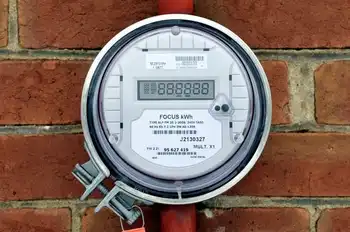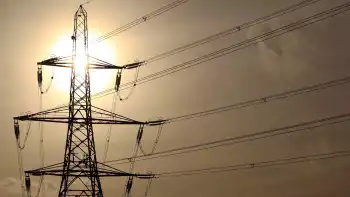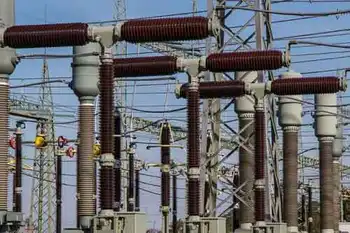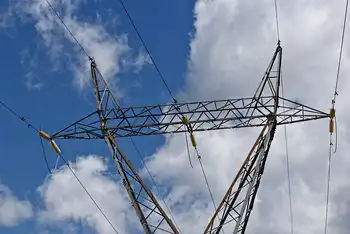Grid hotspot set to expand
The drops of rain serve as a conductor, allowing a mild electrical current to leak out of the insulated lines and discharge itself into the moist air. The electrons make noise as they escape.
"You always want to hear that crackle when you are here, because you know that somebody, somewhere, is making some money," said Kehl, a senior adviser on capital programs for BC Transmission Corp.
"And if you are not making it today (on B.C.'s side of the border) then you will make it tomorrow."
Power, and money, are always moving one way or the other through this station, named for Tom Ingledow, a chief engineer for BC Hydro forerunner British Columbia Electric.
A lot more will run through in the future, and it will be a key to the B.C. government's aggressive plan to transform the province into a sort of Saudi Arabia of green power, with enhanced transmission lines serving as the "pipeline" for a much greater flow of electricity to environmentally conscious utilities in the United States.
"This station is strategically important to the economy of the province," noted Paul Tutt, a BC Hydro field manager who has responsibility for operations at Ingledow.
On the east side of Ingledow Substation, a 500-kilovolt electrical current flows in from B.C.'s primary hydroelectricity facilities - generating stations as much as 1,150 kilometres distant from the Metro Vancouver region, where most of the province's electricity is consumed.
At Ingledow, power for the Metro market is channeled through transformers that dampen it down to lesser voltages and send it back out on smaller wires to businesses and residential customers.
Power also flows through here to the United States.
On the south side of the station, a set of high-voltage transmission lines and towers link Ingledow to Custer substation in Ferndale, Wash., where electrons generated in northeast B.C. will be redistributed to U.S. customers and may eventually find their way into a light bulb in a home in northern California.
At times, when U.S. power is cheap, BC Hydro halts the flow of water from its dams and imports from its neighbours to the south through its electricity trading subsidiary, Powerex.
Most years, it is British Columbia that makes money when the lines at Ingledow are crackling.
This trade has long been a good deal for British Columbia - so good, in fact, that regulators in the United States have occasionally harboured suspicions that B.C. was somehow gaming the trading system.
The simple truth, however, is that hydroelectric facilities can respond in mere moments to jumps or drops in market prices for electricity, whereas a coal-fired station needs 24 hours' notice to gear up or down.
In the 2007 fiscal year, for example, BC Hydro - through Powerex - paid $1 billion to import electricity from producers in the United States. But it sold $1.4 billion worth of electricity to the U.S., for a net gain of $400 million to the taxpayers of B.C. That's an amount roughly equivalent to a 14-per-cent reduction in consumer electricity rates for BC Hydro customers.
B.C.'s plan is to become a net exporter of power within eight years, and boost the amount of electricity-sales revenue flowing into the provincial treasury, just as B.C. reaps tremendous resource revenue each year from royalties on another form of energy, natural gas.
The official line from the provincial government is that B.C. has a modest ambition to be self-sufficient in electricity production by 2016, with a proposed surplus of 3,000 gigawatt hours by 2026.
A mix of private-sector power development, the possible construction of the Site C dam on the Peace River, and conservation efforts to cut electricity consumption would contribute to that target.
The province's stated intention is to curtail B.C.'s exposure to the volatile electricity spot market - and the risk of sudden price jumps - on North America's western power-trading grid, which runs from New Mexico and California to the borders of the Yukon and Northwest Territories.
But BCTC documents paint a somewhat different picture.
That 3,000-gigawatt-hour surplus is the baseline, not the average amount.
In years when BC Hydro dams are brimming with water, the electricity surplus will be 12,000 gigawatt hours - enough to power the entire B.C. grid for three months a year at present rates of consumption.
This plan has touched off what critics are calling a "gold rush" as independent power producers (IPPs) comb the province for streams that are amenable to run-of-river hydroelectric developments.
The Western Canada Wilderness Committee says the government must ensure new developments tread lightly on sensitive environmental areas. And BC Citizens for Public Power says private-sector power development - especially when it's intended for export - will unnecessarily increase electricity rates for BC Hydro customers.
"There seem to be a lot of mixed messages out there from the provincial government and private-power producers in B.C.," said Melissa Davis, executive director of Concerned Citizens.
"On the one hand, they claim we're in an energy crisis and we're a net importer of electricity. On the other hand, they are intent on adding more power production to the system expressly to export to the U.S.
"Privatization of power in this province is not - as government and private sector would like us to believe - a way for business to assume the financial risks to provide additional energy for our own domestic purposes.
"Rather, it's a get-rich-quick scheme for IPPs to produce more power and sell it to the highest bidder."
But you cannot sell more electricity to the U.S. if your circuits threaten to overheat.
That is where BCTC, and Ingledow, come in.
A few weeks ago, BCTC gained authorization from the BC Utilities Commission to undertake what is called a "thermal upgrade" of circuits on the Ingledow-Custer transmission path.
For about $3 million worth of improvements, BCTC figures it can run more power through the lines - and collect an extra $25 million a year in transmission tariffs from utilities importing power into B.C.
That's in addition to whatever benefits Powerex can generate by moving more electricity to the U.S. as B.C. evolves into a large-scale power exporter.
It is, in short, a tremendous bargain. A relatively nominal investment cost, $3 million, will bring disproportionately high returns.
So far, the main complaint from stakeholder groups is that the money it will generate will apparently be diverted to the provincial treasury rather than dedicated to keeping electricity rates low.
In any event, the timing for the Ingledow project is good.
A lot of the equipment here is nearing the end of its useful life, and is being replaced with new transformers, circuit breakers and related items.
On the morning of The Vancouver Sun's recent tour of Ingledow, station workers were installing one of dozens of new current transformers, or CTs, needed to replace original equipment dating to the opening of the station 40 years ago.
Tour members, including Gerhard Kehl, Paul Tutt and BCTC system planner Julius Pataky, were instructed to move to the opposite end of the substation while the new transformer was powered up for the first time - as a hedge against a possible explosion.
On older equipment, breaking or joining an electrical current involves two levered metal arms called disconnects, a current transformer and a circuit breaker, and the units sprawl across the substation.
When you take one of these units off-line, simply breaking the circuit is not enough to stop electricity from arcing from one disconnect arm to another - it will jump five meters from one side of the circuit to another in a bid to keep flowing, even as the disconnect arms swing up and away from each other.
The most effective way to snuff the arc is with a high-pressure jolt of air - not really all that different from the method you'd use to blow out a birthday candle.
The new units don't require as much space, and the disconnects, circuit breaker and transformer are all built into a single hybrid unit with vastly greater insulating properties than the old pieces.
When you break the current on a new unit, the arc across the circuit is only 15 centimetres, and there's no need for a blast of air to break the connection.
"There are a lot less moving parts, so there is a lot less that can go wrong with the unit," Tutt explained.
"Smaller unit size also eliminates the need to expand the substation in order to accommodate more equipment to serve a growing population," Pataky said, noting that even the air-blast circuit breaker system is "reaching end of life."
But he added that while the equipment is becoming easier to operate, the grid is becoming more complex - BCTC and BC Hydro gain tens of thousands of new customers each year, and the Lower Mainland absorbs the biggest concentration of new residential and commercial development.
"I would say the new equipment gives us more control over the system. It's far more sophisticated, but we have to be careful because sophistication makes it more complex, and we've got to manage that," Pataky said.
The corporation's engineers are "continually" running models of system interruptions, and how to manage them before they cause electric spikes that could knock out a whole station, he said.
Operating and maintaining the system "is a lot more complicated than most people can imagine," Tutt added. "If we lose a transmission station, we've lost a city."
Kehl said BCTC's primary challenge, in rebuilding and expanding the station, is imagining what will be demanded of it by the community two or three decades into the future.
"When this station was first conceived back in the 1960s, they made decisions that impact it forever," Kehl said.
"It's a challenge for us to think far enough ahead, so that the decisions we make now are of value to Vancouver 30 to 40 years from now.
"You get locked in once you've made that choice."
Related News

NY Governor Cuomo Announces Green New Deal Included in 2019 Executive Budget
ALBANY - New York Governor Andrew M. Cuomo announced the Green New Deal, a nation-leading clean energy and jobs agenda that will aggressively put New York State on a path to economy-wide carbon neutrality, is included in the 2019 Executive Budget. The landmark plan provides for a just transition to clean energy that spurs growth of the green economy and prioritizes the needs of low- to moderate-income New Yorkers.
"Climate change is a reality, and the consequences of delay are a matter of life and death. We know what we must do. Now we have to have the vision, the courage,…





